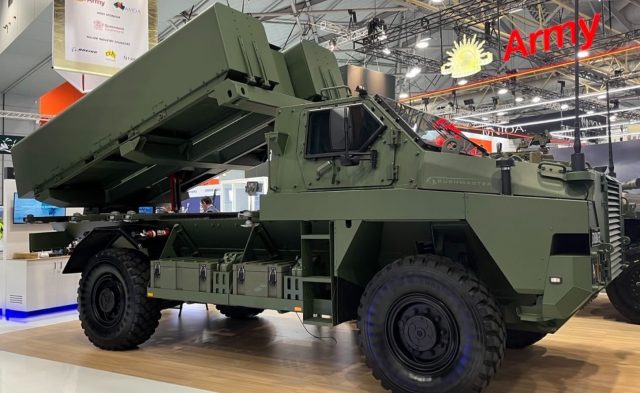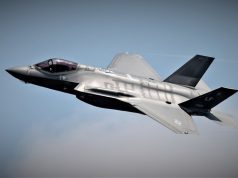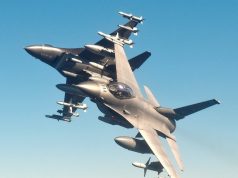Kongsberg Australia and Thales Australia have officially introduced the StrikeMaster, their solution for Australia’s land-based maritime strike capability, at the Land Forces 2022 exhibition in Brisbane.
StrikeMaster blends Konsgberg’s Naval Strike Missile (NSM) with the Thales-built Bushmaster armored vehicle.
The companies are pitching the system as a “low-risk” solution for Australia’s Project Land 4100 Phase 2, which will see the country invest up to A$500 million in the program, with a tentative delivery date for first systems set by 2024.
All of the components of the StrikeMaster could be manufactured locally by the two companies’ Australian hubs.
StrikeMaster features a modified Bushmaster vehicles with two NSM launchers while the system can also include CEA Technologies radars, according to earlier reports.
The StrikeMaster would provide Australian forces with the ability to strike ships and other targets at sea at ranges of more than 250 kilometers.
While the Bushmaster is already in service with the army, the navy is currently in the process of acquiring the NSM for its Anzac-class frigates and Hobart-class destroyers. Starting in 2024, the NSM will replace the Harpoon anti-ship missile currently in service.
Other contenders in Project LAND 4100 Phase 2 emerge
While Kongsberg and Thales were the first duo to confirm their participation in LAND 4100 as early as this spring, they are now not the only ones.
Lockheed Martin has unveiled its solution for Australia’s land-based anti-ship capability needs. It comes in the form of an AGM-184C Long Range Anti Ship Missile Surface Launched (LRASM-SL) mounted on a M142 High Mobility Artillery Rocket System (HIMARS).
According to Naval News, Lockheed Martin is touting a high degree of commonality for the presented solution, with Lockheed spokesperson Dominic DeScisciolo saying that the LRASM-SL for the army would have “a high degree of commonality with those being offered to the navy.”
To remind, Australia already has 200 LRASMs on order under a $990 million contract from July 2020, and Lockheed is working on the integration of the missile on Royal Australian Air Force F/A-18 E/F Super Hornets. The company is also working with Thales Australia on the development of booster and rocket motor technology for the LRASM-SL.



























